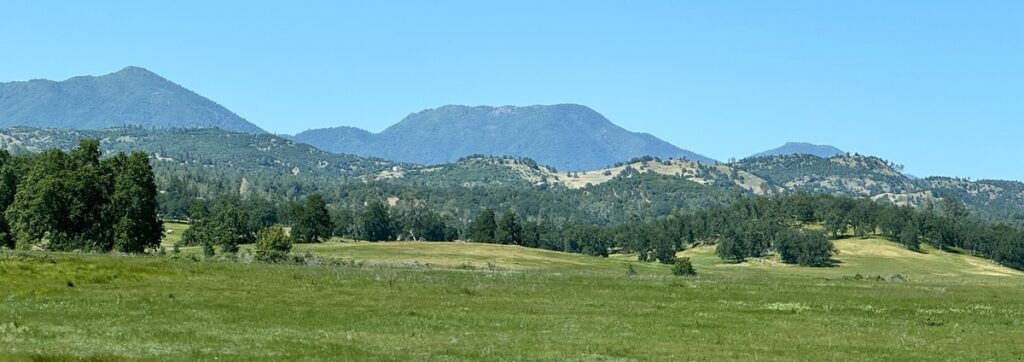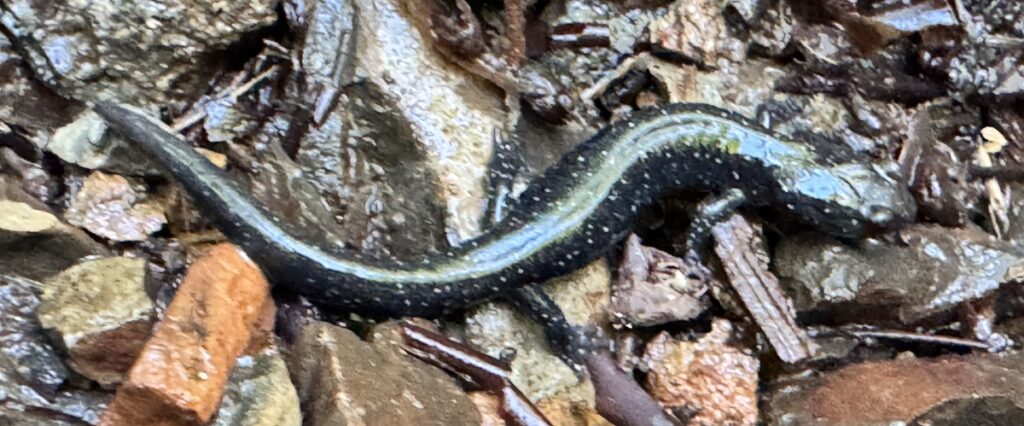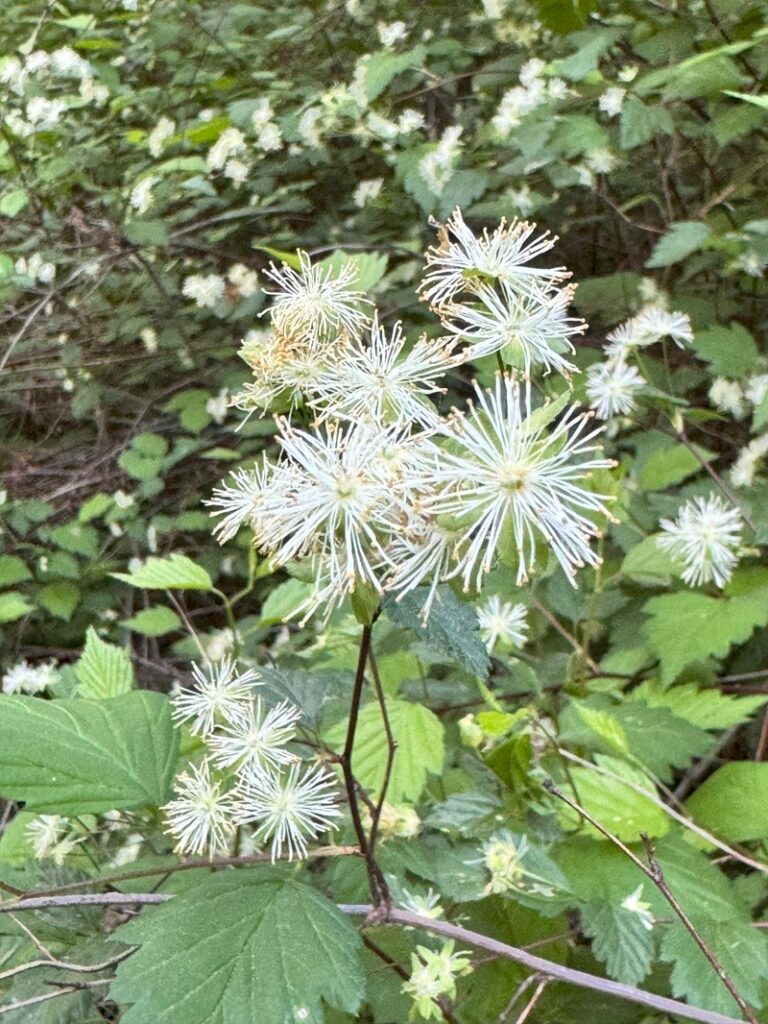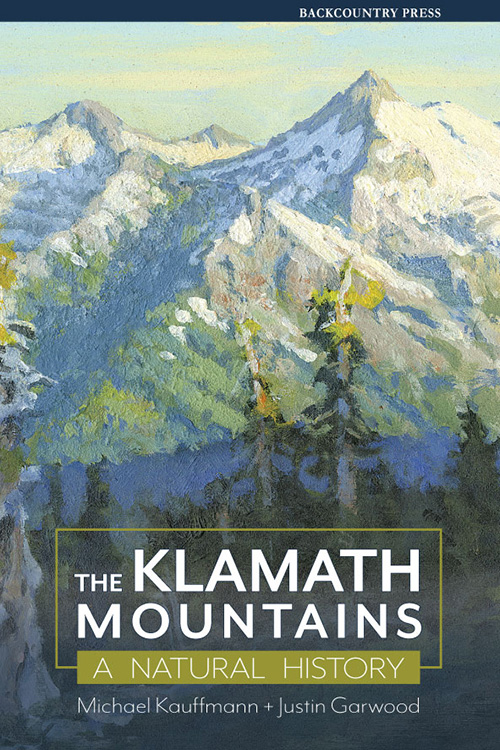In Search of a Living Fossil in the Eastern Klamath Mountains
This spring, I embarked on my inaugural journey to the far eastern reaches of the Klamath Mountains—a realm where ancient limestone outcrops narrate tales of deep time, and where evolutionary relicts persist in quiet resilience. My quest: to encounter the elusive Shasta snow-wreath (Neviusia cliftonii), a botanical enigma known only to the rugged terrains surrounding Lake Shasta.

A Hidden Gem: The Discovery of Shasta Snow-Wreath
Discovered in May 1992 by botanists Dean Taylor and Glenn Clifton along Cedar Creek near Round Mountain, the Shasta snow-wreath remained undetected for so long largely because of its subtle presence and fleeting bloom. Nestled among poison oak and resembling common shrubs like oceanspray and ninebark, this rare species reveals itself only for a short window in late April or early May.
Its ghostly white flowers, composed mostly of stamens, appear for just a week to ten days, making field identification a narrow and serendipitous opportunity.
A Living Fossil: Neviusia’s Ancient Legacy
Before Neviusia cliftonii was described, the genus Neviusia was thought to contain only a single species—the Alabama snow-wreath (Neviusia alabamensis), found over 2,000 miles away. Fossil evidence reveals that the genus once flourished across western North America during the Eocene, about 45 million years ago.
The Shasta snow-wreath is thus considered a living fossil, a relict of deep evolutionary time that managed to survive in isolated pockets of California limestone while disappearing from much of its ancient range.
The 1993 Great Snow-Wreath Expedition
The discovery sparked excitement among botanists and conservationists. In the spring of 1993, nearly 50 scientists participated in the “Great Snow-Wreath Expedition,” a collaborative effort to find more populations around Lake Shasta. The search led to the documentation of numerous new sites, expanding our understanding of the species’ limited range and genetic diversity.
Today, around 21 known occurrences of Shasta snow-wreath (Neviusia cliftonii) have been identified—each genetically distinct yet morphologically similar. These shrubs primarily reproduce clonally through root systems, contributing to their rarity and vulnerability.
Shasta Snow-Wreath and the Limestone Ecosystems of the Klamath Mountains
The unique limestone geology of the eastern Klamath Mountains doesn’t just support Neviusia. It also fosters a rich diversity of other ancient and endemic life forms.
While hiking the region, I encountered a Shasta black salamander (Aneides iecanus), another local endemic. These lungless salamanders breathe through their skin and are incredibly sensitive to moisture and temperature—perfectly adapted to this cool, shaded habitat. Nearby karst formations also house rich snail diversity and subterranean caves with an obligate cave-dwelling scorpion, blind and colorless, shaped by generations of life in total darkness.

Why It Matters: Evolutionary Refugia and Conservation
The eastern Klamath Mountains are not just rich in species—they are rich in evolutionary history. Places like these are known as refugia: pockets of habitat where ancient lineages survive the upheavals of time, climate, and disturbance. The Shasta snow-wreath (Neviusia cliftonii) is a symbol of this resilience. It is a living thread that connects modern-day California to an Eocene past.
Featured in The Klamath Mountains: A Natural History
Many of these stories, including the detailed account of Neviusia cliftonii and the biological treasures of this limestone-rich region, are included in The Klamath Mountains: A Natural History, a book I had the honor of co-editing. This work celebrates the confluence of geology and biodiversity that makes this range one of the most important ecological hotspots on the West Coast.
Final Reflections: A Sacred Encounter with Deep Time
To stand among blooming Shasta snow-wreath is to step into a prehistoric world—one shaped by geology, isolation, and chance. These hills hold the memory of ages.
If you find yourself exploring the eastern Klamath Mountains in spring, look closely. Hidden between the folds of ancient limestone (and a few places elsewhere) might be a flower from a forgotten world, still blooming, still waiting to be seen.


